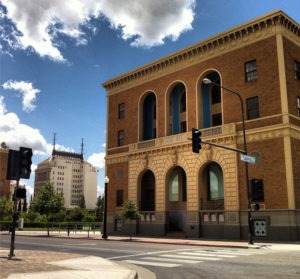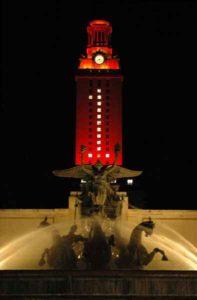February 8, 2011; Source: New York Times | For 33 years, Simon Rodia, an Italian immigrant, spent every spare minute creating the Watts Towers, a storied outdoor sculpture located in Los Angeles. A work of personal inspiration, they reach, glittering up into the sky – 17 intricate structures, some as high as 99 feet, with a rough mosaic of glass and ceramic and other dibs and dabs set against mortar and metal, the Watts Towers here described are an artistic treasure vastly under-acknowledged in this country.
Once in danger of being demolished, the towers were rescued by a committee made up of architects, artists, community activists and the Los Angeles County Museum of Art. That committee managed the site until the mid-seventies. In 1978, ownership was transferred to the state and the City of Los Angeles has managed the facility since the.
Now as budget cuts have decimated Los Angeles’ coffers, responsibility for the care and maintenance of the intricate artwork is shifting again. The city workers maintaining the facility have apparently been laid off and the city is trying to re-privatize the maintenance and exhibiting responsibility, moving to contract to the Los Angeles County Museum of Art (LACMA). The museum is now trying to raise money for the purpose.
Sign up for our free newsletters
Subscribe to NPQ's newsletters to have our top stories delivered directly to your inbox.
By signing up, you agree to our privacy policy and terms of use, and to receive messages from NPQ and our partners.
But, according to this article in the New York Times, the museum is culturally and physically removed from the Watts neighborhood where the towers are located and the privatization effort is causing local concern.
The Watts Towers Arts Center that runs the tours of the facility is protesting on its website: “As advocates for the preservation of Art and Culture, the undersigned request that Mayor Antonio Villaraigosa and the Los Angeles City Council immediately remove the Watts Towers Art Center (WTAC) and the Charles Mingus Youth Art Center (CMYAC) from the city’s list of art facilities that are slated for privatization. The Watts Towers Art Campus provides invaluable art education, cultural programming and open green space to under-served youth and community members as well as providing a cultural destination to the diverse national and international tourists that visit the Simon Rodia Watts Towers . . . The Watts Towers Cultural Art Park needs to remain in the public domain. Please join us to stop Cultural Genocide . . . ”
While NPQ is not privy to the whole story, it is evident that this is a truly extraordinary situation created out of a complex history, and the confluence of a unique sensibility and a neighborhood. “Outside” forces like the museum, even if it is a part of that history, are subject to skepticism. Rosie Lee Hooks, the director of the Watts Towers Arts Center says, “I am trying to figure out what Lacma is doing here . . . We’ve been here 50 years. I think they ought to plan about what they need to do, and come down and meet with us before they start showing the baby off.”—Ruth McCambridge













